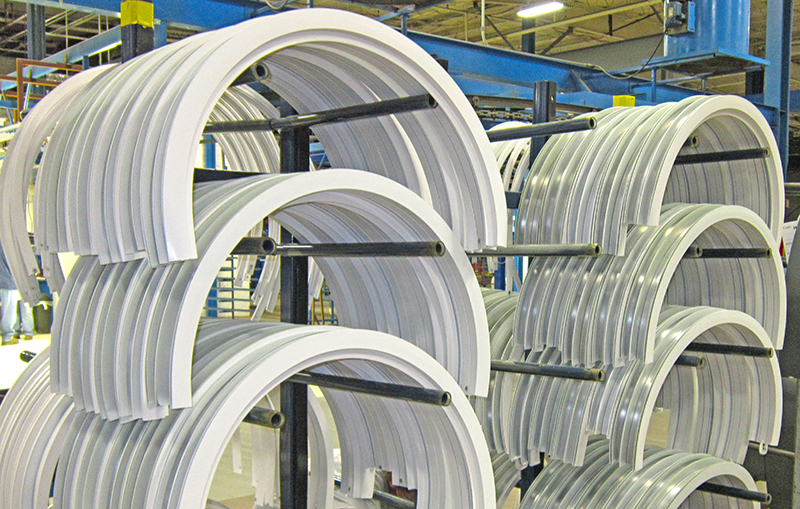
All of us like to save time, money and worry. Fabricators of aluminum-framed fenestration products may not realize the value-added savings available from their finishing partners. Beyond providing high-quality, consistent and warrantied architectural coatings, here are four ideas to explore:
Inventory management
You need material to fabricate your products. But once it’s ordered, where is it stored? Who ensures the delivery count matches the order and inspects the material to confirm it arrived in good condition? Where and how is it stored to preserve that it stays in good condition prior to finishing? The floorspace and staffing needed to properly manage your inventory can be expensive.
If you have a high volume of mill finish stock aluminum regularly being shipped from your extruder to you and then to your finisher, ask about the possibility of directly shipping to the finisher. This saves transportation costs and frees up your space and personnel. It also can shorten your lead times by more quickly pulling from your inventory, finishing to your customers’ specifications and delivering the finished material where it’s needed.
Stretch forming
Most commercial buildings feature rectangular fenestration systems. Aluminum extrusions are relatively easy to fabricate into straight lines and crisp corners that accommodate expansive openings and views. The process is more complex when your projects call for half circles, eyebrow arcs, gothic pointed arches or other curved frames.
Stretch forming keeps the extrusion under constant tension while wrapping it around a form, or die, to make contoured parts. It involves annealing and tempering to soften and harden the metal at critical stages. If radius windows are not a staple for your business, talk to your finishing partners about their capabilities in bending and stretch forming aluminum. Many finish warranties require that aluminum must first be formed before it is painted or anodized.
Thermal improvement
Consider omitting another step in your fabrication process by having your finishing partner provide thermal improvement services. Finished architectural aluminum is a versatile and durable material, but a thermal barrier is needed between the framing members to minimize heat transfer. Fenestration systems with high thermal performance support buildings’ efficient operation and occupant comfort. They also help conserve resources, reduce emissions and achieve model energy codes.
Packaging and shipping
The less your material is handled, the less likelihood there is for damage. When the majority of steps take place under one roof, there is no need to package and repackage your material. In addition to minimizing the potential for scratches and dents, you’re eliminating waste in packing materials. Because there is less transportation between suppliers, you’re helping reduce fuel consumption and associated emissions. These steps contribute to improving an economical and environmentally responsible supply chain.
Having a qualified finishing partner do more can alleviate the time, cost and headaches of having fabricators house specialty equipment and trained staff, or needing to coordinate between several points of contact. Fabricators and their customers benefit when finishing providers can offer multiple value-added services as a single-source solution.



